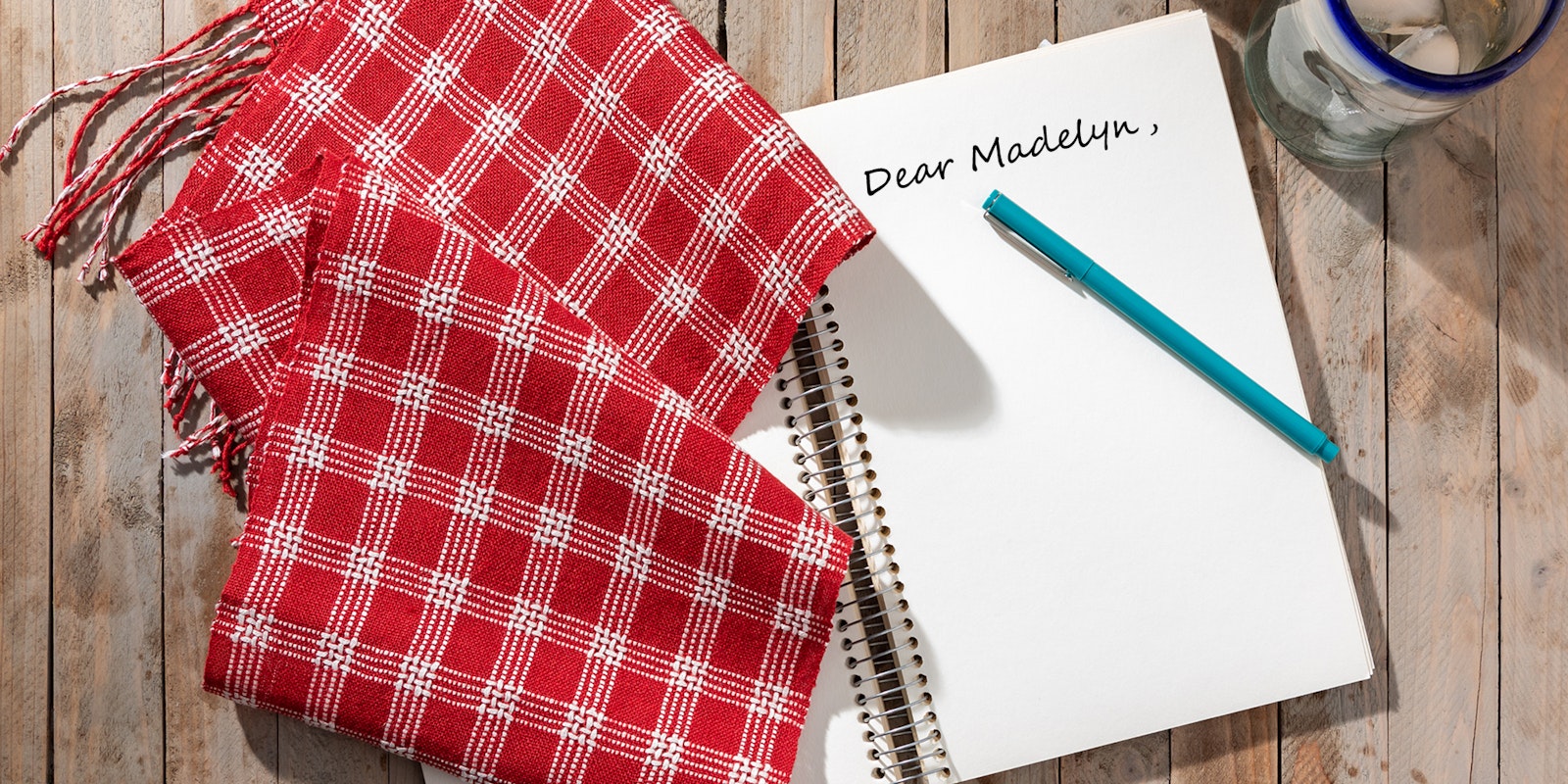Hi Madelyn!
I want to weave the silk deflected doubleweave scarf from the Jan/Feb 2007 issue ("Silk Scarves in Deflected Doubleweave," pages 68–71), but before I do, I want to weave a sampler of deflected doubleweave in cotton so I can get the hang of the structure before I try it out on silk. How does one figure out the appropriate sett for doubleweave?
—Christina
Hi Christina!
The difference between "deflected" doubleweave and the usual patterned (block) doubleweave is in the number of threads that alternate in each layer in the threading and treadling. Patterned doubleweave usually alternates 1 thread from one layer with one thread from the other in both warp and weft (DLDL for dark light dark light, for example). In some cases, as in Finnweave and Mexican pick-up, 2 threads from each layer alternate (DDLL). Because the goal is to weave two fabrics (in two layers) that are the same as each other and usually plain weave (though you can also weave patterned doubleweave in two layers of twill), the doubleweave sett is exactly double the sett of the single-layer fabric (if 10/2 cotton is sett at 24 ends per inch, for example, doubleweave in 10/2 cotton would be sett at 48 ends per inch). The same principle is followed with doublewidth weaving (I.e., weaving a blanket in two layers that open off the loom to be a single layer).
In deflected doubleweave, 4 or more ends from one layer alternate with 4 or more ends of the other. In some cases, especially when differential shrinkage is involved, many ends (6, 8, or more) in a non-shrinking yarn from one layer alternate with 2 ends in a shrinking yarn of the other.
For the scarf you want to weave, the layers alternate 4 and 4. Since the resulting cloth does not form a dense plain weave in both layers (threads slide toward each other in 4-thread float areas), a rule of thumb is to set the cloth at 1-1/4 to 1-1/2 the density of a single layer. So for 10/2 cotton, instead of 48 ends per inch, in a 4/4 alternation, I use either 30 or 36 ends per inch depending on the hand I'm looking for in the final cloth. For larger alternating numbers of ends (6/6 or 8/8), the sett should be closer. Only sampling will tell for sure.
—Madelyn

